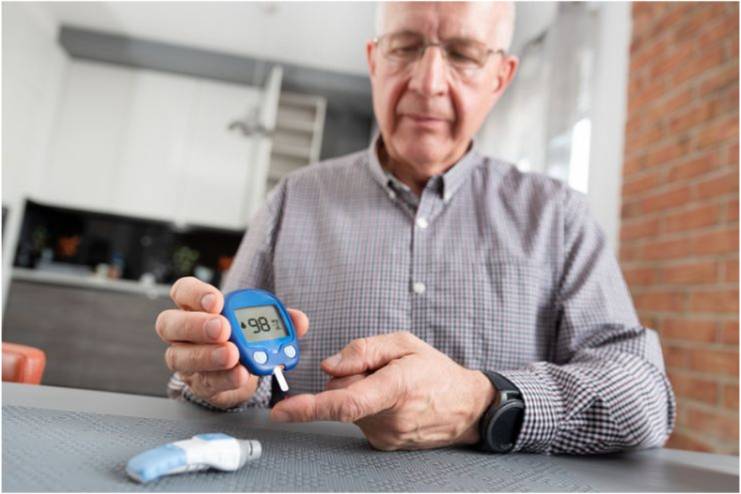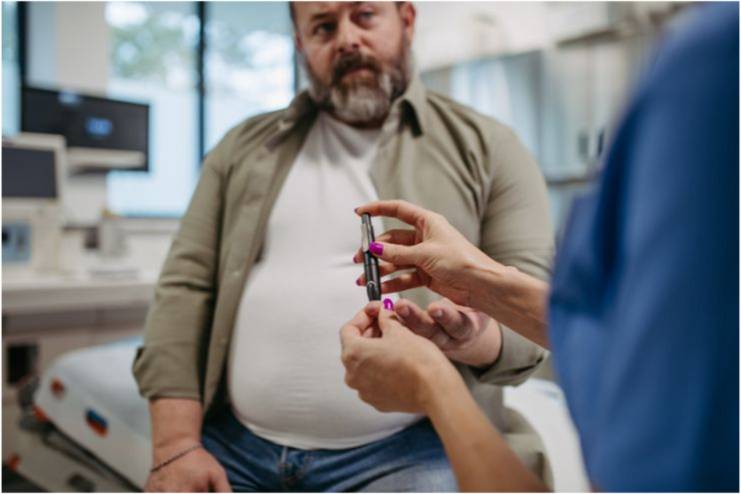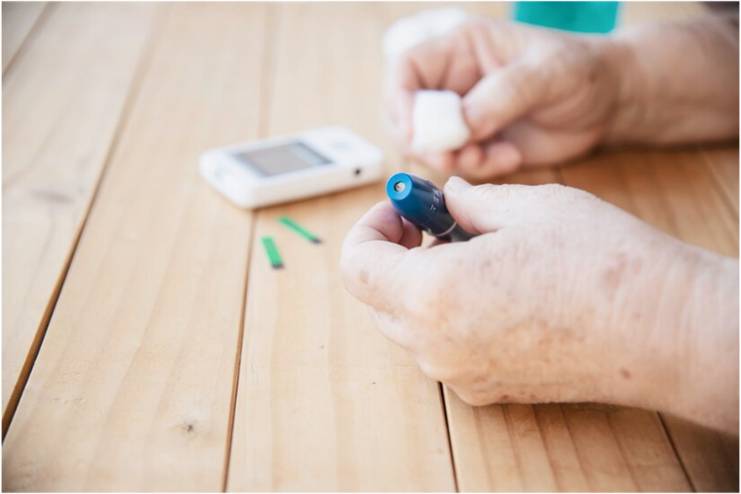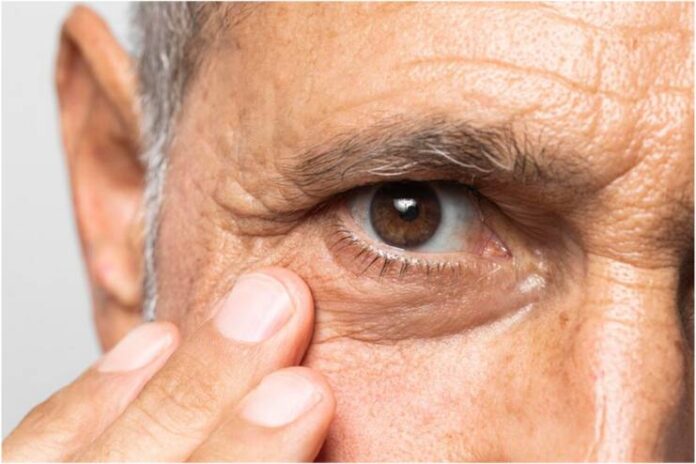Affiliate Disclaimer
Some links in this article are affiliate links. We may earn a small commission if you make a purchase through these links, at no extra cost to you. We only recommend products we find useful to our readersUnderstanding the intricacies of diabetic retinopathy—including its causes, symptoms, risk factors, and available management options—is vital for individuals living with diabetes. With proactive measures, such as controlling blood sugar levels and adhering to a regular eye care routine, the onset and progression of diabetic retinopathy can be effectively managed.
This comprehensive overview aims to shed light on the condition, emphasizing the importance of awareness and preventive strategies in safeguarding eye health for diabetes patients.
What is Diabetic Retinopathy?

Diabetic retinopathy is an eye disease that arises as a complication of diabetes. It is characterized by damage to the blood vessels in the retina, the light-sensitive tissue at the back of the eye. This condition develops over time, primarily due to prolonged high blood sugar levels that lead to the deterioration of the retina’s blood supply. When the tiny blood vessels in the retina become damaged, they may leak fluid or bleed, causing various vision problems.
Types of Diabetic Retinopathy
Diabetic retinopathy is generally classified into two main types:
- Non-Proliferative Diabetic Retinopathy (NPDR): This early stage is marked by mild changes in the retina, including minor bleeding and the formation of fatty deposits. Symptoms may not be noticeable at this stage, making regular eye exams crucial for early detection.
- Proliferative Diabetic Retinopathy (PDR): As diabetes progresses and blood sugar levels remain uncontrolled, the condition may advance to PDR. This stage is characterized by the growth of new, abnormal blood vessels in the retina, a process known as neovascularization. These vessels are fragile and prone to bleeding, potentially leading to severe vision complications, including retinal detachment and significant vision loss.
Importance of Understanding Diabetic Retinopathy
Recognizing the nature of diabetic retinopathy is vital for those living with diabetes. Awareness can lead to proactive measures such as regular eye screenings and diligent diabetes management, ultimately reducing the risk of developing this sight-threatening condition. Understanding the underlying mechanisms, types, and potential progression of diabetic retinopathy empowers individuals to seek timely medical intervention, ensuring that they can maintain optimal eye health while managing their diabetes.
Causes of Diabetic Retinopathy

Diabetic retinopathy occurs due to damage to the blood vessels in the retina, a condition closely linked to the long-term effects of diabetes. Understanding the primary causes and contributing factors is essential for preventing and managing this condition.
The Role of Diabetes
- High Blood Sugar Levels: The primary cause of diabetic retinopathy is sustained high blood sugar levels, which can damage blood vessels throughout the body, including those in the retina. Over time, elevated glucose levels lead to changes in the structure and function of these vessels, increasing the risk of leakage and bleeding.
- Duration of Diabetes: The risk of developing diabetic retinopathy escalates with the duration of diabetes. Individuals who have had diabetes for many years are more likely to experience retinal damage. Studies indicate that about 40% of individuals with type 1 diabetes and approximately 20% of those with type 2 diabetes will develop some stage of diabetic retinopathy during their lifetime.
Other Contributing Factors
In addition to the direct effects of high blood sugar, several other factors can exacerbate the risk of diabetic retinopathy:
- Uncontrolled Blood Pressure
- High Cholesterol Levels
- Pregnancy
- Smoking and Lifestyle Factors, such as poor diet and lack of physical activity
Symptoms of Diabetic Retinopathy

Diabetic retinopathy often develops silently, with early stages showing few or no noticeable symptoms. Awareness of potential signs is crucial for early detection and intervention.
Early Symptoms
In the initial stages of diabetic retinopathy, individuals may not experience any symptoms. This absence of symptoms is why regular eye exams are vital for those with diabetes. However, as the condition progresses, the following early symptoms may emerge:
- Blurred Vision: Individuals may notice fluctuations in their vision, with periods of blurriness interspersed with clearer vision.
- Impaired Color Vision: Changes in the ability to see colors vividly can occur, making it difficult to distinguish between similar shades.
- Eye Floaters: These are small spots or strings that float in a person’s field of vision, which may become more prominent with the progression of the disease.
Advanced Symptoms
As diabetic retinopathy advances, symptoms may become more pronounced, indicating the need for immediate medical attention:
- Dark or Empty Spots: Patients may experience dark areas in their vision, particularly in the central field of view.
- Difficulty with Night Vision: Challenges with seeing in low light conditions can develop, making it hard to drive or navigate in dimly lit environments.
- Sudden Vision Loss: In severe cases, individuals may experience a sudden and total loss of vision, which can be alarming and require urgent medical intervention.
- Patches or Streaks: Visual disturbances may include patches or streaks obstructing vision, further indicating the progression of the disease.
Diagnosis of Diabetic Retinopathy
Diagnosing diabetic retinopathy involves a thorough evaluation by an eye care professional, typically an ophthalmologist. Early detection is critical in preventing vision loss, and several methods are utilized to assess the condition of the retina.
Comprehensive Eye Exam
- Dilated Eye Exam: This is the primary method for diagnosing diabetic retinopathy. Eye drops are used to dilate the pupils, allowing the doctor to examine the retina’s interior for any abnormalities, such as swollen blood vessels, leaks, and the presence of new, abnormal blood vessels. The doctor may also take photographs of the retina for further analysis.
Advanced Diagnostic Techniques
- Fluorescein Angiography: In this test, a dye called fluorescein is injected into a vein, typically in the arm. As the dye circulates, photographs of the retina are taken to identify areas where blood vessels are leaking or have become blocked. This information helps guide treatment decisions.
- Optical Coherence Tomography (OCT): OCT is a noninvasive imaging technique that provides high-resolution, cross-sectional images of the retina. It allows the doctor to measure the thickness of the retina and detect fluid accumulation or cysts, indicating diabetic macular edema.
People with diabetes should have a comprehensive dilated eye exam at least once a year. Those with more advanced disease or additional risk factors may need more frequent examinations, such as every 2-4 months.
Treatment of Diabetic Retinopathy
The treatment of diabetic retinopathy depends on the severity of the condition and its progression. Effective management aims to stabilize or improve vision and prevent further complications.
Monitoring and Watchful Waiting
- Early Stages: In the initial stages of diabetic retinopathy, particularly nonproliferative diabetic retinopathy, doctors may opt for a “watchful waiting” approach. Regular monitoring allows for the assessment of any changes in the condition without immediate intervention. Patients may require more frequent eye exams to track their progress.
Medical Management
- Blood Sugar Control: Maintaining optimal blood sugar levels is crucial. Effective diabetes management can slow the progression of retinopathy and reduce the risk of complications. Patients are encouraged to work closely with their healthcare providers to develop personalized management plans.
- Medications:
- Anti-VEGF Injections: These injections target vascular endothelial growth factor (VEGF), a protein that promotes the growth of abnormal blood vessels. Anti-VEGF medications can reduce swelling and leakage in the retina.
- Corticosteroids: In some cases, corticosteroids may be injected into the eye to manage inflammation and fluid buildup.
Surgical Interventions
- Laser Treatment:
- Panretinal Photocoagulation (PRP): This laser procedure aims to shrink abnormal blood vessels and seal leaks. It can significantly reduce the risk of severe vision loss in patients with proliferative diabetic retinopathy.
- Focal Laser Treatment: This technique targets specific areas of leakage in the retina, helping to reduce macular edema.
- Vitrectomy: This surgical procedure involves the removal of the vitreous gel that fills the eye. It may be necessary for patients with severe bleeding in the vitreous or retinal detachment. The surgery helps to improve vision and manage complications.
Limitations of Treatment
- Not a Cure: While treatments can slow the progression of diabetic retinopathy and improve vision, they are not cures. Ongoing management of diabetes and regular eye exams are essential to monitor the condition.
- Potential Risks: Treatments may carry risks, such as complications from surgery or laser treatment, including vision loss or changes in peripheral vision. Patients should discuss these risks with their healthcare providers.
Prevention of Diabetic Retinopathy

Preventing diabetic retinopathy is largely centered around the effective management of diabetes and regular eye care. By taking proactive measures, individuals with diabetes can significantly reduce their risk of developing this serious eye condition.
Managing Diabetes
- Blood Sugar Control:
- Keeping blood sugar levels within the target range is crucial. Regular monitoring and adjustments to diet, exercise, and medication can help maintain optimal levels and reduce the risk of complications.
- Healthy Lifestyle Choices:
- Diet: A balanced diet rich in fruits, vegetables, whole grains, and lean proteins can help control blood sugar levels. Patients should avoid excessive sugar and refined carbohydrates.
- Physical Activity: Regular exercise improves overall health and aids in blood sugar management. Aim for at least 150 minutes of moderate aerobic activity per week.
- Weight Management: Maintaining a healthy weight is essential for controlling blood sugar levels and reducing the risk of diabetic complications.
Regular Eye Examinations
- Annual Eye Exams:
- Individuals with diabetes should have a comprehensive dilated eye exam at least once a year. Early detection is critical for effective treatment and can help prevent severe vision loss.
- Monitoring Changes in Vision:
- Patients should be vigilant about changes in their vision, such as blurred vision, floaters, or difficulty seeing colors. Promptly reporting these changes to a healthcare provider can lead to early intervention.
Controlling Comorbidities
- Blood Pressure and Cholesterol Management:
- High blood pressure and high cholesterol levels can exacerbate the effects of diabetes on eye health. Regular screenings and adherence to prescribed medications can help keep these levels in check.
- Smoking Cessation:
- Smoking increases the risk of complications in diabetic patients, including diabetic retinopathy. Quitting smoking can improve overall health and reduce the risk of eye disease.
Education and Support
- Patient Education:
- Understanding the risk factors, symptoms, and management strategies for diabetic retinopathy empowers patients to take charge of their health. Education can include information on lifestyle changes, the importance of regular screenings, and treatment options.
- Support Groups:
- Engaging in support groups or diabetes education programs can provide encouragement, motivation, and shared experiences, making it easier for individuals to adhere to management plans.
Conclusion
Diabetic retinopathy is a prevalent and serious complication of diabetes that can lead to significant vision impairment or blindness if left untreated. The condition arises from prolonged high blood sugar levels, which damage the delicate blood vessels in the retina. As the disease progresses, individuals may experience a range of symptoms, from blurred vision and floaters to complete vision loss. Understanding these symptoms and recognizing the importance of regular eye examinations can facilitate early detection, which is crucial in managing the disease effectively.
Management of diabetic retinopathy involves a comprehensive approach that includes controlling blood sugar levels, addressing associated health issues like high blood pressure and cholesterol, and undergoing regular eye screenings. Treatment options, such as laser therapy and anti-VEGF injections, can help slow disease progression and prevent further vision loss. By staying informed and proactive, individuals with diabetes can better navigate the challenges posed by this condition, ultimately preserving their vision and enhancing their quality of life.
References
- https://www.mayoclinic.org/diseases-conditions/diabetic-retinopathy/symptoms-causes/syc-20371611
- https://www.aao.org/eye-health/diseases/what-is-diabetic-retinopathy
- https://my.clevelandclinic.org/health/diseases/8591-diabetic-retinopathy
- https://www.ncbi.nlm.nih.gov/books/NBK560805/
- https://www.felixhospital.com/blogs/understanding-diabetic-retinopathy
- https://www.medicalnewstoday.com/articles/183417
- https://www.upmc.com/services/eye/conditions/diabetic-retinopathy
In this Article




















